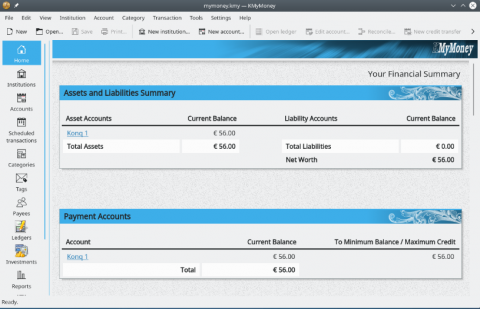Latest Published Articles
| Title | Body | Authored on |
|---|---|---|
| Creating a Swap File Versus Swap Partition in Linux | When setting up a Linux distro using an installer in your favorite hypervisor of choice, you'll need |
|
| Linux From Scratch Presentation by Pat Barnes | We were pleased to present a member of the WNCLUG-Asheville, Pat Barnes, who gave |
|
| AV Linux MX Edition System Setup & Product Review | I have been using AV Linux MX Edition 21.1 as my daily driver now for almost a year. This Linux distribution, originating from Canada sports the xfce desktop environment. AV Linux MX Edition is based on Debian Linux as well as MX Linux from which it gets part of its name. |
|
| Converting Ubuntu 20.04 LTS to Vanilla Gnome3 DE | By default, Ubuntu 20.04 LTS is developed with a highly customized Gnome3 desktop which looks very much like the original Unity desktop. Many people, including myself, do not like the look and feel of this desktop even though it is based on the Gnome3 desktop environment. I am assuming that you are familiar with both Linux, the Linux Terminal, and have used Ubuntu Linux in the past. If you don’t meet these prerequisites, then you may find some of the steps in this conversion process to be a little confusing. |
|
| Designating Hot Spares in Your ZFS Storage Pool | There is a feature built into ZFS called the “hotspares” feature which allows a sysadmin to identify those drives available as spares which can be swapped out in the event of a drive failure in a storage pool. If an appropriate flag is set in the feature, the “hot spare” drive can even be swapped automatically to replace the failed drive. Or, alternatively, a spare drive can be swapped manually if the sysadmin detects a failing drive that is reported as irreparable. Hot spares can be designated in the ZFS storage pool in two separate ways: |
|
| Linux Kernel 16.1-rc8 Is Now Available | Linux 6.1 release candidate 8, which is anticipated to be the final release candidate, was announced by Linus Torvalds. |
|
| Top 10 Web Servers In Use Today | Want to know what the top 10 Web servers in use today are? Well, look no further. |
|
| Aliases to Speed and Accuracy | Linux bash aliases are like personal shorthand we can use in a Linux terminal. Aliases let us create abbreviations of a few characters to represent an entire Linux command, or even several of them. Think of bash aliases as command line macros for Linux. For instance, here’s an alias to print a sorted list of shell environmental variables: |
|
| Benchmarking a Storage Device in Linux | There are a couple of CLI tools that can be used to benchmark an HDD (external or internal). These are dd and hdparm. However, for Debian Linux, there’s a great GUI application that performs Disk Read speed benchmarking and both Disk Read & Write speed benchmarking if the drive being tested is unmounted. The dd command is used to monitor the writing performance of a disk device on a Linux and Unix-like system. An example for testing an internal SSD would be: $ sudo dd bs=1M count=256 if=/dev/zero of=test |
|
| Bash Directory Stack | What is a stack and why is it important in Linux or Computer Science, for that matter? A stack, in the context of this article, refers to a last-in-first-out (LIFO) list or more affectionately referred to as a pushdown store. This is in contrast to another arrangement called first-in-first-out (FIFO) used in granaries since the grain is loaded at the top of the tower and dispensed at the bottom into trucks or other vehicles for delivery to its destination. |
Copyright © 2024 Dan Calloway.com - All rights reserved
Developed & Designed by Alaa Haddad

